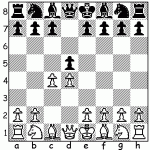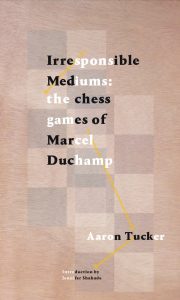Chess openings are a series of moves that White undertakes at the very beginning of the game. The game of chess, throughout its long history, has undergone a great many seachanges as to what the best Openings are. However, when games with the same Opening are put through the Chessbard, the poems, across eras, take on a striking resemblance to each other. It is these echoes, across games (as across poems) that the Chessbard project concerns itself with on the following pages.
 “The Ruy Lopez opening is commonly referred to as the “Spanish Game” and is one of the most popular openings in chess. It is a follow-up and extension of white’s King Pawn Opening (in which white begins by moving a pawn to e4.) The move is named after Ruy Lopez de Segura, a 16th Century priest (and an avid chess player) who wrote a book analyzing the game.” (Wikipedia).
“The Ruy Lopez opening is commonly referred to as the “Spanish Game” and is one of the most popular openings in chess. It is a follow-up and extension of white’s King Pawn Opening (in which white begins by moving a pawn to e4.) The move is named after Ruy Lopez de Segura, a 16th Century priest (and an avid chess player) who wrote a book analyzing the game.” (Wikipedia).
The initial opening, which very quickly spirals out into many, many variations, is 1. e4 e5 2. Nf3 Nc6 3. Bb5
Read the chesspoems that begin with the Ruy Lopez
 “The English derives its name from the English (unofficial) world champion, Howard Staunton, who played it during his 1843 match with Saint-Amant and London 1851, the first international tournament…A flank opening, it is the fourth most popular and, according to various databases, anywhere from one of the two most successful to the fourth most successful of White’s twenty possible first moves. White begins the fight for the centre by staking a claim to the d5 square from the wing, in hypermodern style.” (Wikipedia)
“The English derives its name from the English (unofficial) world champion, Howard Staunton, who played it during his 1843 match with Saint-Amant and London 1851, the first international tournament…A flank opening, it is the fourth most popular and, according to various databases, anywhere from one of the two most successful to the fourth most successful of White’s twenty possible first moves. White begins the fight for the centre by staking a claim to the d5 square from the wing, in hypermodern style.” (Wikipedia)
The English opening begins with 1. c4.
Read the chesspoems that begin with The English
 The Queen’s Gambit is one of the oldest known chess openings. It was mentioned in the Göttingen manuscript of 1490 and was later analysed by masters such as Gioachino Greco in the seventeenth century. (Wikipedia)
The Queen’s Gambit is one of the oldest known chess openings. It was mentioned in the Göttingen manuscript of 1490 and was later analysed by masters such as Gioachino Greco in the seventeenth century. (Wikipedia)
The Queen’s Gambit begins with 1. d4 d5 2. c4
Read the chesspoems that begin with The Queen’s Gambit
The opening is named after Richard Réti (1889–1929), an untitled Grandmaster from Czechoslovakia. The opening is in the spirit of the hypermodernism movement that Réti championed, with the center being dominated from the wings rather than by direct occupation. (Wikipedia)
The Réti Opening for White begins with 1. Nf3 d5 2. c4

